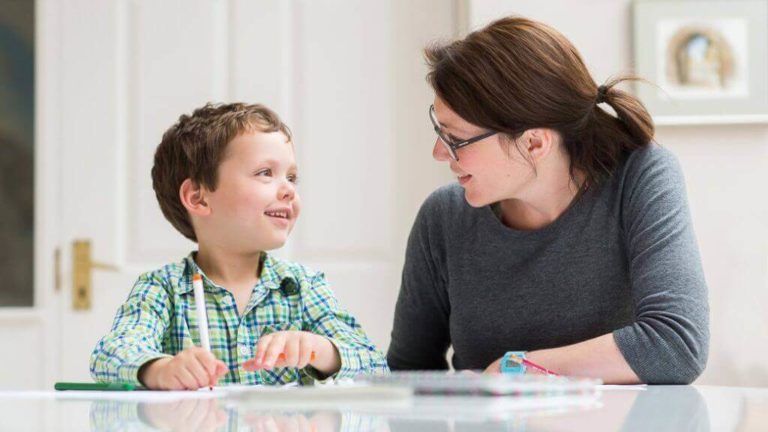How to Support your Child with a School Move – Local and International
In this blog, experienced teacher and tutor Alison, explores the best way to support your child with a school move. Whether you are moving locally or internationally, Alison sets out how to handle an important change sensitively.
“You are off to great places!
Today is your day!
Your mountain is waiting …
So, get on your way!“
Dr Seuss
Many parents might have come across the story-mountain visual used to help children plan narratives; it has an opening, a build-up, a climax, a resolution, and a conclusion. Like Dr Seuss, thinking of a school move as a mountain appeals to me – it certainly feels like a mountain to climb, both for students and parents! The climax of the move (or top of the mountain) is certainly not the end of the journey. I also like relating a move to a narrative, as a move becomes part of our story and one we are likely to reflect on and retell throughout our lives.
So, a school move for your child, at any age, feels like a momentous decision and immense responsibility, whether the move is to the local school, with many existing friends, or to a new school in a new country, where your child doesn’t know anyone.
I have been a form-teacher for hundreds of students transitioning between primary and secondary school at 11 and 13, and to other schools at non-standard entry points. I have supported students and parents moving locally, between state and private (and vice versa) and internationally. I have lost count of the times parents and students have asked me how they can prepare for a school move and make the mountain feel less daunting.
For some, their school move is one with many options and therefore choices; for others, the move might be constrained by geography, finances, or other factors. Usually, the further the move, the bigger the mountain. However, the same planning, discussion, and support principles apply whatever the individual circumstances or unique challenges. In this post, I’ll take you through the move mountain and what you can do to support your child and yourself on the journey.
The Opening
The start of your school move mountain is the decision to move. For those making a local, standard-entry-point move, this may well have been on your child’s timeline since before they can remember. For others, it can be a surprise. It is essential to find a safe space to talk through the move and what it means with your child. If possible, involve them in the initial decision, or where this is not appropriate, in the subsequent decisions as much as possible. Give time for the news to sink in and your child to process it, then return frequently to how they feel and questions they may have. Try to bring the move up as early as appropriate for your child’s age and personality. One student I taught first learnt of a school and country move when boarding the plane to his new location. This is too late: it denied him the opportunity to say goodbye and process the move. It denied him the chance for a voice, some control of decisions that affected him, and the chance to play an active role in the move. This might seem extreme, but many parents feel that school choice is their decision and do not engage their children. Even if you think you should decide, or you have to decide for your child, involving them in the process is essential.
Acknowledge and allow your child to share their feelings, negative and positive. This can take time and patience, as a typical initial response to the proposed change is one of shock and denial. Often, we look for and point out the positives, thus failing to recognise the challenges. With hindsight, my daughter feels in our last international move that we looked forward to the move with rose-tinted spectacles, failing to acknowledge the challenges that lay ahead or hear her fears.
Top Tips: Involve your child in the decision or move process, provide a safe space to share feelings, recognise that it might take a while to sink in
The Build-Up
The bulk of the practical work and logistics are during this stage: researching schools and locations, school visits, applications, entrance tests, interviews, emails, the list seems never-ending. The key here is support.
You may be lucky that your current school has an established transition programme (this is most likely for standard-entry secondary transition). When I have set up or delivered such programmes, they involve school visits, trial lessons, buddies who have made the move before, talks, and PSHE work around hopes, fears, questions. If you do not have this support, could you ask for the school to help? Could you find parents or students who have been through the move already who could support you and your child? The new school should also be able to provide some support, contacts, and resources. And social media groups and forums can also provide invaluable support. Ensure that the new school has as complete a picture of your child as possible – to check it is the best match and that your child’s individual needs are met. I have worked with families who have not wanted to share Ed Pysch’s reports with a new school in case it impacts negatively on their application. I always stress that the most important thing is ensuring your child’s needs are met, and the more a school knows about a child, the better they can determine whether they can meet those needs or how they will do so.
Part of the build-up also needs to be the academic bridge between schools. If you remain in the same country and curriculum, this should be straightforward and managed by the school. If your child moves between systems or internationally, it can be more complex. Tutors experienced in different curricula can identify and bridge gaps. It is also essential to ask schools how learning might differ. I encourage parents to ask questions such as:
“What does a typical school day/lesson look like?”
“What independent work is expected from my child?”
“What forms of assessment do you use, and how often do you do these?”
My son entered Y6 in an area with grammar schools having been educated in a PYP school (the Primary Years Programme of the IB), where he had never done a spelling or mental maths test and where he chose how he would present each piece of work (written, poster, PowerPoint etc.). The way of learning was a more significant jump than the content differences.
Find out what your child will miss and plan for goodbyes and final events. Mark these positively but recognise that they can elicit a vast range of emotions in you and your child.
The disruption of the status quo in this stage of the move mountain can lead to fear, anger and frustration. Acknowledge and provide a safe space for your child to share these feelings.
Top Tips: Find out what supports exist in your child’s existing school, their new school and the local/school community, plan for the academic bridge, goodbyes and final events, provide a safe space to share feelings
Starting in a new country or a new school is daunting and usually terrifying. For standard-entry secondary transition, hopefully, the children will have a good summer break before starting. However, many parents find that the summer before secondary school is fraught with worry and anxiety. Even as an experienced teacher, I never sleep the night before the new academic year, and I use this as a reminder of what the students must be experiencing. For those making a geographic or house move, at the same time as a school move, one usually starts in the new place feeling exhausted.
Often the actual move is seen as the climax or endpoint, but it is a new beginning. I find Maslow’s hierarchy of needs helpful in explaining why it can be so hard. While physiological needs might be met, there are challenges to the following two pyramid levels, with a lack of stability, belonging and control. In a locational move, all family members are likely to feel this.
The Climax
One needs to re-establish routines, friendships, activities and become familiar with a new place and a new way of doing things. It is exhausting. There is pressure on sibling, or family, relationships when one has all social networks removed, and it takes time and effort to replace these. Expat families often explain the pressure on sibling relationships immediately after a move when siblings have to become each other’s best friends and social life before new social networks are established.
Top Tips: Recognise that it is hard and making new friends might need help and support from you or the school, provide a safe space to share feelings and discuss challenges
The Resolution
It takes time to establish new friendships and build a new life. Often it is a bumpy road. Let your child know that you are there, and don’t expect it all to fall into place immediately. Find ways to help them keep in touch with their old friends and life before the move. If the move is geographically close, clubs and activities can provide continuity during this time. If the move is international or a longer distance, look for ways technology can help your children keep in touch. Even if the old friendships do not turn out to be life-long friendships, they can be helpful and supportive during the transition. Try to continue with at least some old routines or traditions, whether that be morning preparation or Friday pizza movie night.
As children move up through school, it becomes harder for parents to connect with other parents and feel part of the community. Actively searching out ways to connect with your child’s school helps you understand their context better and can lead to support and information networks that will be beneficial for both you and your child. Joining the PTA is not for everyone, nor do many parents have much time, but just attending a couple of events a year or chatting with other parents can help you feel more involved in the school.
Top Tips: Give it time, be there to listen and help your child connect with their old and new lives, find ways to engage with their new school, check in with your child and the school to make sure that there are not academic gaps – either in content or in the approach to teaching and learning.
The Ending
Even without a school move, I have noticed that students tend to come into their own in the second term, showing greater security and confidence. With a school move, it might take longer. I usually expect it to be at least a year for students to feel fully established after an international move, but it differs from individual to individual.
The ending is likely to make itself known to you suddenly: when you have settled into new routines and no longer have to think about them; when you realise that you or your child no longer feels like the newbie; when you realise that the move has become part of your narrative rather than a period you are living through.
Top Tips: Try to enjoy the journey and when it is challenging, recognise that your child is building resilience and experience that will help them with change in the future.







Start the discussion!